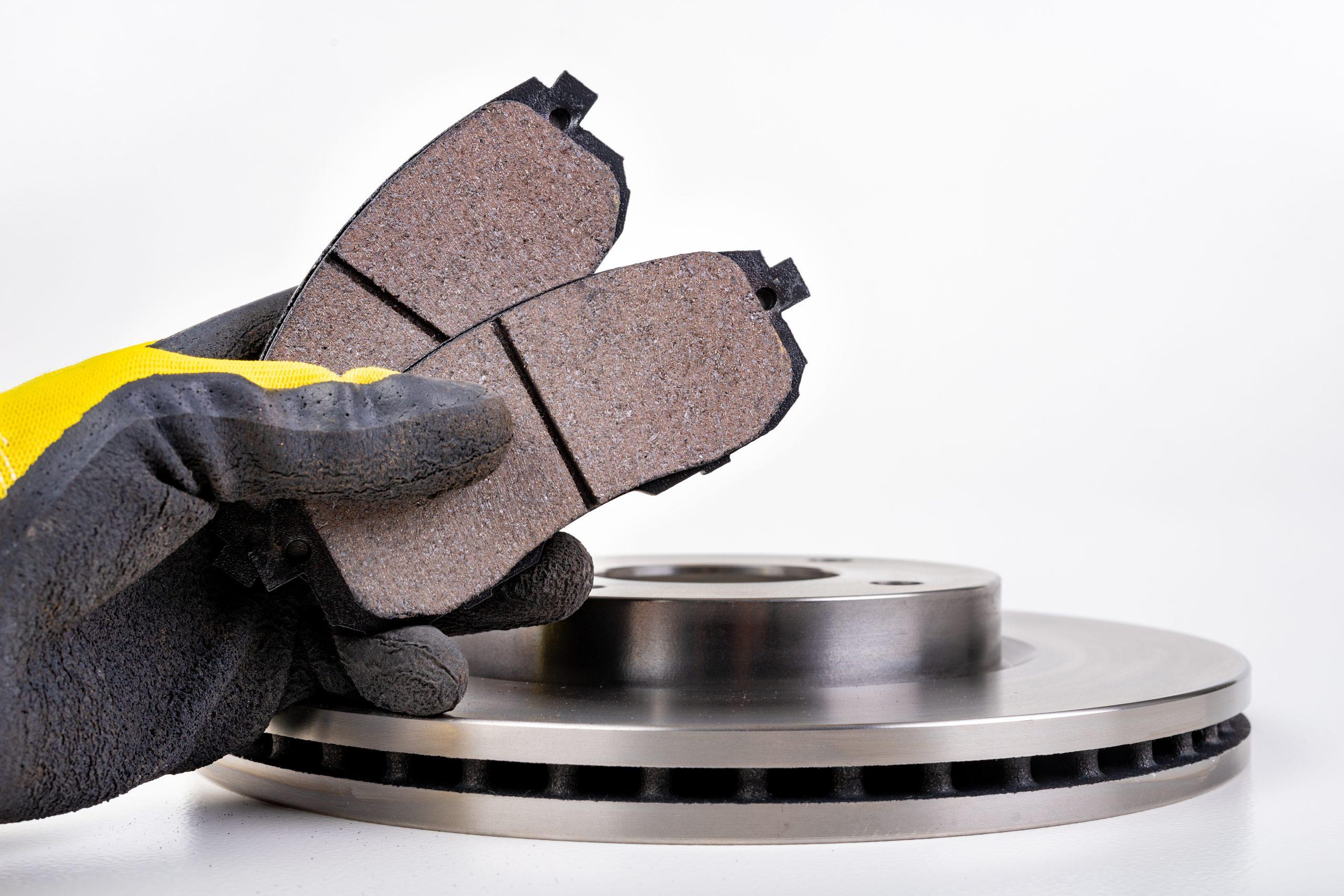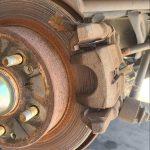
Ceramic vs. Metallic Brake Pads: Pros and Cons
- Harbor Brakes
- December 18, 2023
- Brakes
- brake pads, brakes, ceramic, metallic, pads
Your vehicle’s braking system is essential for your safety on the road. When you press the brake pedal, pressurized fluid activates the brake pads, which then create friction to slow down your vehicle. There are three main types of brake pads: ceramic, metallic, and organic. In this article, we will focus on the differences between ceramic and metallic brake pads, highlighting their pros and cons to help you make an informed decision for your vehicle.
Key Takeaways:
- Ceramic brake pads offer quiet operation and minimal brake dust.
- Metallic brake pads provide improved braking performance and better heat dissipation.
- Ceramic brake pads are suitable for urban commuting, while metallic brake pads are ideal for high-performance vehicles.
- Consider your driving style, vehicle manufacturer recommendations, and budget when choosing brake pads.
- Regular brake pad inspection and replacement ensure optimal braking performance and safety.
Ceramic Brake Pads
Ceramic brake pads are a popular choice for many drivers due to their numerous advantages. Made from dense ceramic material with embedded copper fibers, these brake pads offer unparalleled performance and reliability. Here are some key advantages of ceramic brake pads:
- Quiet operation: Ceramic brake pads are known for their silent performance. They generate less noise compared to metallic brake pads, providing a smooth and comfortable driving experience.
- Low dust production: One of the significant advantages of ceramic brake pads is their minimal dust production. This means your wheels stay cleaner for longer, reducing the need for frequent cleaning and improving the visual appeal of your vehicle.
- Superior performance in various temperatures: Ceramic brake pads perform exceptionally well in a wide range of temperatures, making them suitable for all weather conditions. Whether it’s scorching heat or freezing cold, ceramic brake pads maintain consistent stopping power, ensuring your safety on the road.
Despite these advantages, it’s important to be aware of a few drawbacks of ceramic brake pads:
- Higher cost: Ceramic brake pads are generally more expensive than other types of brake pads. However, many drivers consider the additional cost a worthwhile investment due to their superior performance and durability.
- Poor performance in extreme cold: While ceramic brake pads excel in high-temperature conditions, they may not perform optimally in extreme cold. In frigid temperatures, the effectiveness of ceramic brake pads can be reduced, leading to longer stopping distances.
- Increased stress on the braking system: Ceramic brake pads put more stress on the braking system due to their hardness. The superior friction provided by these pads can result in increased wear on other brake components, such as rotors. Regular maintenance and inspections can help mitigate this issue.
In conclusion, ceramic brake pads offer several advantages, including quiet operation, low dust production, and superior performance in different temperatures. However, they come at a higher cost and may not perform well in extreme cold, leading to increased stress on the braking system. Consider these factors when choosing the right brake pads for your vehicle.
Metallic Brake Pads
Metallic brake pads are a popular choice for those seeking improved braking performance, especially in high-performance vehicles. These brake pads are engineered with a mixture of various metals, including copper, iron, and steel, combined with a graphite binding component. The unique composition of metallic brake pads offers several advantages for vehicle owners.
“Metallic brake pads provide enhanced stopping power, making them an ideal option for drivers who demand precise and immediate braking performance.”
One of the notable advantages of metallic brake pads is their ability to withstand high temperatures, making them suitable for demanding driving conditions. The metals in these brake pads help dissipate heat effectively, preventing brake fade and ensuring consistent braking performance over prolonged use.
In addition to their excellent heat dissipation capabilities, metallic brake pads also offer superior durability. The combination of metals with a graphite binding component results in brake pads that can withstand heavy use and have a longer lifespan compared to other types of brake pads.
However, it is important to note that metallic brake pads have some drawbacks. These brake pads tend to produce more noise during braking compared to ceramic or organic brake pads. Additionally, they generate more brake dust, which can accumulate on the wheels and require more frequent cleaning.
Furthermore, the metallic composition of these brake pads can put more strain on the brake rotors, potentially leading to increased wear and tear. Regular maintenance, including rotor inspections and resurfacing, is recommended to ensure optimal performance and longevity.
Advantages of Metallic Brake Pads:
- Improved braking performance
- Excellent heat dissipation
- Enhanced durability
Disadvantages of Metallic Brake Pads:
- Noise generation during braking
- Increased brake dust production
- Potential strain on brake rotors
| Advantages | Disadvantages |
|---|---|
| Improved braking performance | Noise generation during braking |
| Excellent heat dissipation | Increased brake dust production |
| Enhanced durability | Potential strain on brake rotors |
Ceramic vs. Metallic: Which is Right for You?
When it comes to choosing the best brake pads for your vehicle, you have three main options: ceramic, metallic, and organic. The selection process depends on various factors, including your driving style and the manufacturer’s recommendations for your specific vehicle.
If you own a high-performance vehicle and prioritize exceptional braking performance, metallic brake pads may be the ideal choice for you. These brake pads are designed to handle the heat generated from aggressive driving and provide excellent stopping power. However, keep in mind that metallic brake pads tend to be noisier and produce more brake dust compared to other types.
On the other hand, if you’re an urban commuter seeking a quieter ride and cleaner rims, ceramic brake pads are worth considering. Ceramic brake pads are known for their low noise levels and reduced dust production. They also perform well across different temperatures. However, they can be more expensive compared to other options and may not perform optimally in extreme cold conditions.
Regardless of the type of brake pads you choose, it’s crucial to have them regularly inspected and replaced when needed to ensure optimal braking performance and safety on the road.
Pros and Cons of Ceramic Brake Pads
When it comes to choosing brake pads for your vehicle, ceramic brake pads have their own set of advantages and disadvantages. Understanding the pros and cons can help you make an informed decision.
Advantages of Ceramic Brake Pads:
- Quiet Operation: Ceramic brake pads are known for their quiet operation. They produce less noise compared to metallic brake pads, resulting in a smoother and more comfortable driving experience.
- Reduced Brake Dust: Ceramic brake pads generate less brake dust compared to metallic brake pads. This not only keeps your wheels cleaner, but it also reduces the need for frequent cleaning and maintenance.
- Efficient Heat Dissipation: Ceramic brake pads have excellent heat dissipation properties. This helps to prevent brake fade and ensures consistent braking performance even under high temperatures.
Disadvantages of Ceramic Brake Pads:
- Higher Cost: One of the main drawbacks of ceramic brake pads is their higher cost compared to other types of brake pads. However, many drivers consider the long-term benefits worth the initial investment.
- Performance in Extreme Cold: Ceramic brake pads may underperform in extremely cold weather conditions. The cold temperatures can reduce their effectiveness, leading to longer stopping distances. It is important to consider this if you live in a region with harsh winters.
- Increased Stress on Other Braking Components: Ceramic brake pads can put more stress on other components of the braking system, such as the rotors. The hardness of the ceramic material can lead to increased wear and tear on these parts over time.
Pros and Cons of Metallic Brake Pads
Metallic brake pads offer several advantages and disadvantages that you should consider when choosing the right brake pads for your vehicle.
Advantages of Metallic Brake Pads:
- Improved braking performance: Metallic brake pads provide excellent stopping power, making them suitable for high-performance vehicles and heavy-duty applications.
- Good heat dissipation: These brake pads can effectively dissipate heat, allowing for consistent braking performance even under demanding conditions.
- Responsiveness: Metallic brake pads offer quicker response times, ensuring immediate braking when you need it most.
Disadvantages of Metallic Brake Pads:
- Noisier operation: Metallic brake pads can generate more noise compared to other types of brake pads, which may lead to squeaking or squealing sounds during braking.
- Increased brake dust: They tend to produce more brake dust, which can accumulate on your wheels and require more frequent cleaning to maintain their appearance.
- Potential brake system strain: Metallic brake pads can put more strain on the brake system, including the rotors, which may lead to increased wear and tear over time.
When deciding whether metallic brake pads are the right choice for your vehicle, weigh these pros and cons against your specific driving needs and preferences. If you prioritize braking performance and are willing to tolerate some noise and brake dust, metallic brake pads may be the ideal option for you.
Conclusion
When it comes to choosing the right brake pads for your vehicle, several factors should be taken into consideration. Your driving style, manufacturer recommendations, and budget are all important aspects to consider.
If you do a lot of urban commuting, ceramic brake pads are a great choice. They provide quieter operation and cleaner rims, making them ideal for everyday driving. On the other hand, if you drive a high-performance vehicle, metallic brake pads are the way to go. They offer improved braking performance and excellent heat dissipation capabilities.
Remember, regular brake pad inspection and replacement are crucial to maintaining optimal braking performance and ensuring your safety on the road. Stay informed, consider your specific needs, and make the right choice for your vehicle!
FAQ
What are the different types of brake pads available?
The three main types of brake pads are ceramic, metallic, and organic.
What are ceramic brake pads made of?
Ceramic brake pads are made from dense ceramic material with embedded copper fibers.
What are metallic brake pads made of?
Metallic brake pads contain various metals such as copper, iron, and steel mixed with a graphite binding component.
Why are ceramic brake pads more expensive than other types?
Ceramic brake pads are more expensive due to their superior performance, low dust production, and quiet operation.
Which type of brake pads produces less brake dust?
Ceramic brake pads produce less brake dust compared to metallic and organic brake pads.
Are metallic brake pads louder than other types?
Yes, metallic brake pads tend to be noisier compared to ceramic and organic brake pads.
Which type of brake pads is suitable for high-performance vehicles?
Metallic brake pads are ideal for high-performance vehicles due to their improved braking performance and excellent heat dissipation capabilities.
How do I choose the right brake pads for my vehicle?
Factors such as your driving style, vehicle manufacturer recommendations, and budget play a role in selecting the right brake pads. Ceramic brake pads are suitable for urban commuting, metallic brake pads are ideal for high-performance vehicles, and organic brake pads are budget-friendly for low mileage.
Why is regular brake pad inspection and replacement important?
Regular brake pad inspection and replacement are crucial for maintaining optimal braking performance and ensuring safety on the road.
Source Links
- https://www.advicsaftermarket.com/technical-resources/tech-tips/pros-and-cons-of-ceramic-brake-pads/
- https://www.bridgestonetire.com/learn/maintenance/ceramic-vs-metallic-brake-pads/
- https://www.minit-tune.com/blog/the-pros-and-cons-of-ceramic-organic-and-metallic-brake-pads



